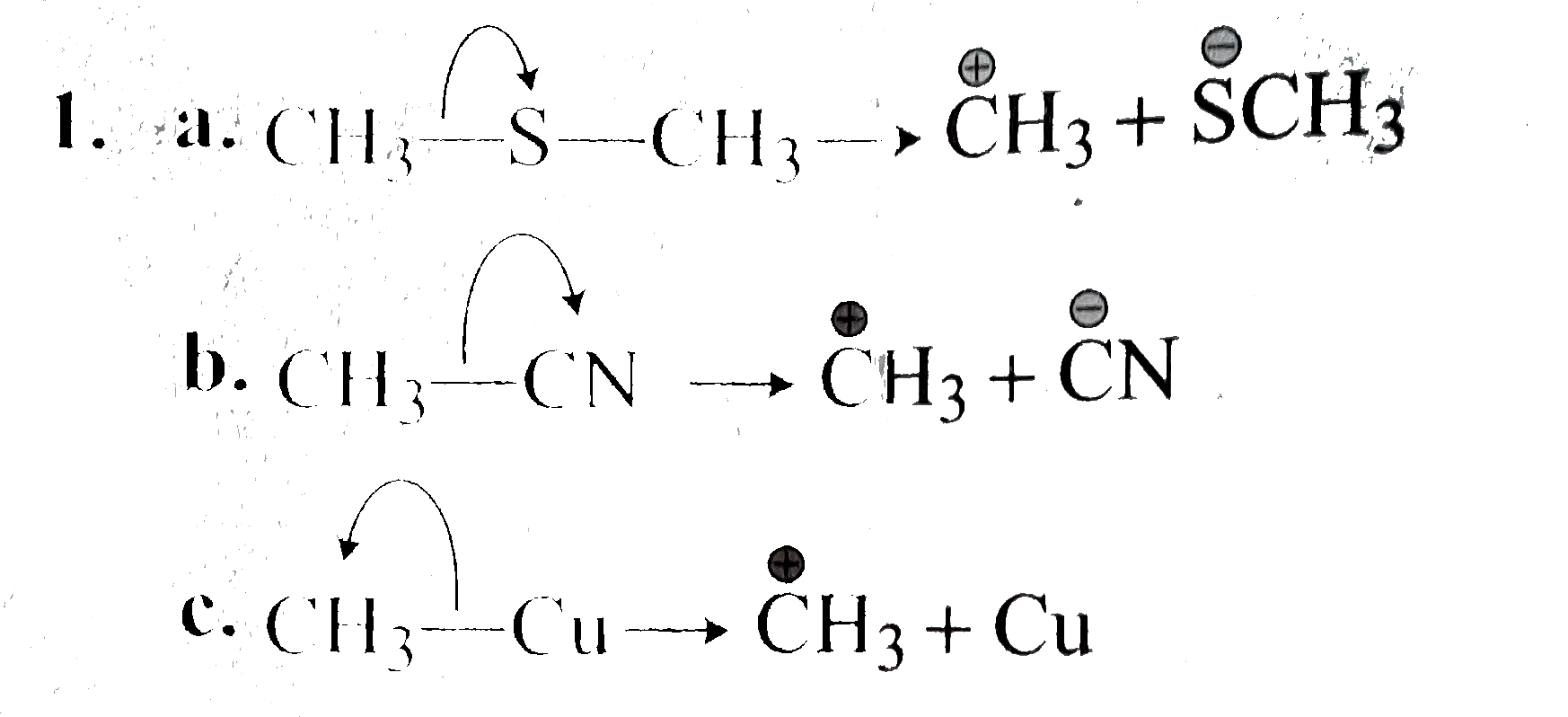Using curved-arrow notation, show the formation of reactive intermediates when the following covalent bonds undergo heterolytic cleavage.
(a) CH3–SCH3, (b) CH3–CN, (c) CH3–Cu
 .
.
(Cu is more electropositive than C)
Topper's Solved these Questions
- GENERAL ORGANIC CHEMISTRYBOOK - CENGAGE CHEMISTRY ENGLISHCHAPTER - GENERAL ORGANIC CHEMISTRYEXERCISE - Comprehension
20 Videos
- GENERAL ORGANIC CHEMISTRYBOOK - CENGAGE CHEMISTRY ENGLISHCHAPTER - GENERAL ORGANIC CHEMISTRYEXERCISE - Multiple Correct
22 Videos
- GENERAL ORGANIC CHEMISTRYBOOK - CENGAGE CHEMISTRY ENGLISHCHAPTER - GENERAL ORGANIC CHEMISTRYEXERCISE - Subjective
11 Videos
- CLASSIFICATION AND NOMENCLATURE OF ORGANIC COMPOUNDSBOOK - CENGAGE CHEMISTRY ENGLISHCHAPTER - CLASSIFICATION AND NOMENCLATURE OF ORGANIC COMPOUNDSEXERCISE - Analytical and Descriptive Type
3 Videos
- HYDROGEN, WATER AND HYDROGEN PEROXIDEBOOK - CENGAGE CHEMISTRY ENGLISHCHAPTER - HYDROGEN, WATER AND HYDROGEN PEROXIDEEXERCISE - Subjective Archive (Subjective)
3 Videos
Similar Questions
Using the curved-arrow notation, show the formation of reactive intermediates when the following convalent bonds undergo heterolytic cleavage :
(a) CH3−S−CH3
(b) CH3−CN
( c) CH3−Cu .
View SolutionUsing curved arrow notation show the formation of reaction intermediates when the following covalent bonds undergo heterolysis.
(i) H3C−CH2−Cl (ii) H3C−C≡N (iii) CH3ONa
View Solution
Knowledge Check
The order of reactivity of CH3CHO,CH3COC2H5andCH3COCH3 is
ACH3CHO>CH3COCH3>CH3COC2H5BC2H5COCH3>CH3COCH3>CH3CHOCCH3COCH3>CH3CHO>C2H2COCH3DCH3COCH3>C2H5COCH3>CH3CHO
Draw the resonance structures for the following compounds. Show the electron shift using curved-arrow notation.
(a) C6H5NO2
(b) CH3CH=CHCHO
View SolutionWhich alkyl halide from the following pair is (i) Chiral and (ii) undergoes SN1 reaction faster ?
(a) (CH3)3CBr
(b) CH3CH2CHBrCH3
View SolutionIn CH3CH2OH, the bond that undegoes heterolytic clevage most readily is:
View SolutionWhat is the type of hybridzation of each carbon in the following compounds?
CH3Cl (b) (CH3)2CO (c ) CH3CN (d) HCONH2 (e) CH3CH=CHCN
View SolutionExpand each the following condensed formulae into their complete structural and bond line formulae:
(a)CH3CH2COCH2CH3 ,(b)CH3CH=CH(CH2)3CH3
View SolutionExplain the nature of the covalent bond using the bond formation in CH3Cl.
View SolutionStrongest and weakest acid among the following is
CH3−NO2CH3−CHOCH3−FCH3−CN
View Solution
